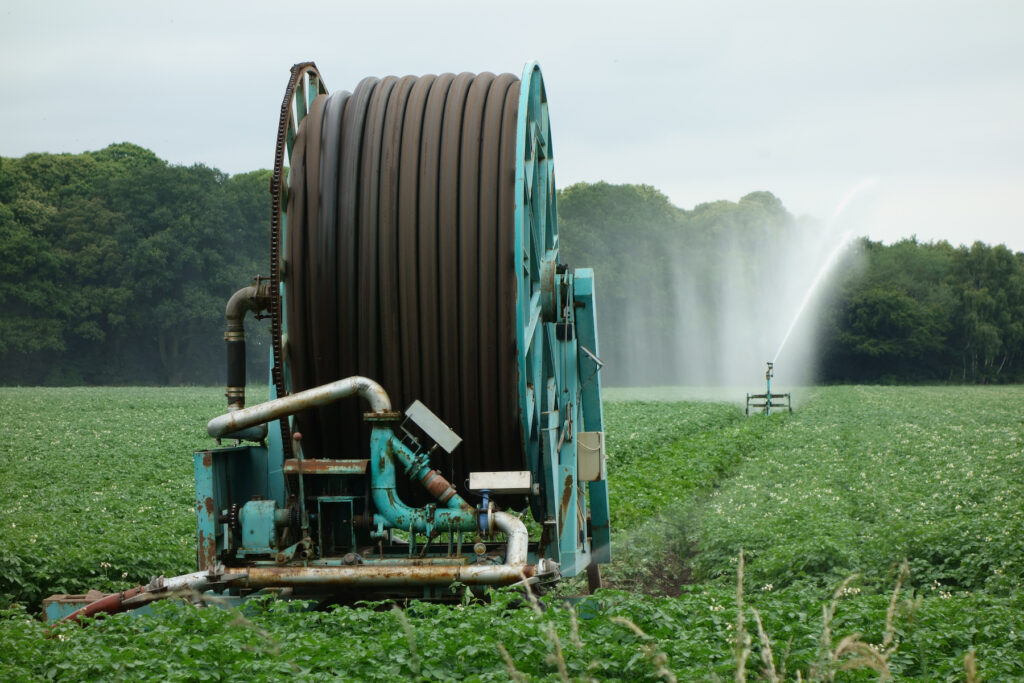Potatoes: Now is the time to review your irrigation strategy
25th May 2023
Extreme weather events, increased demand for water use, plus environmental legislation continues to put pressure on water availability and the need to demonstrate justification for crop irrigation.
Now is a good time for growers to review their irrigation strategy to ensure that their crops receive the irrigation they need whilst using available water in a sustainable way.
Fiona Law-Eadie, senior agronomist at Crop4Sight, explains last summer’s drought followed by a dry autumn and winter means some reservoirs are still not at full capacity, despite the wettest March in 40 years.
“There are several ways growers can manage irrigation, but there’s a fine line between giving crops sufficient water and damaging crops by over-irrigating,” says Fiona.
“Efficient irrigation maintains the correct soil moisture for crop demand throughout the growing season and is a key factor in producing high-yielding, quality potato crops.
“Excessive irrigation that keeps soil near field capacity for substantial periods can aggravate disease, quality issues, impede root growth, reduce nitrogen uptake and damage soil.
“These factors all contribute to unprofitable crops, costing growers money.”
Fiona explains, when it comes to managing irrigation there are two main approaches.
“Firstly, direct soil methods, which use various techniques for measuring soil water content or tension.
“Accuracy of such results are sensitive to good calibration of equipment and being installed at locations in the field representative of both soil type and the irrigation applied – the cost associated can make this a very expensive option.
“Whilst measuring available soil moisture, these systems don’t consider crop water demand or irrigation capacity, often resulting in overwatering.”
Fiona explains: “Secondly, water balance methods, using crop growth stage, environmental and soil data to model crop water demand, either via a manually calculated balance sheet or computerized irrigation scheduling tool.
“The Crop4Sight Irrigation Scheduling Module, available on mobile or web, allows growers to generate real-time irrigation scheduling.
“One of the great benefits of this system is that schedules can be produced as often as a grower needs, especially if weather conditions change dramatically.
“Other systems run on a weekly basis and crop requirements can change significantly during that time.
“This flexibility delivers more efficient water management as growers are able to match irrigation to crop demand.
“Creating a whole farm irrigation strategy taking into account both water requirements of individual crops, as well as irrigation capacity and demands from irrigation equipment elsewhere on- farm.”
Fiona explains, to use the module, growers need to enter information about their fields and irrigation plan which takes a matter of minutes to do.
“In season, growers then need to input the amount of irrigation applied, rainfall data and canopy measurements which will then automatically generate accurate schedules as often as required which is unique to Crop4Sight.
Find out more about the Crop4Sight irrigation module here.

